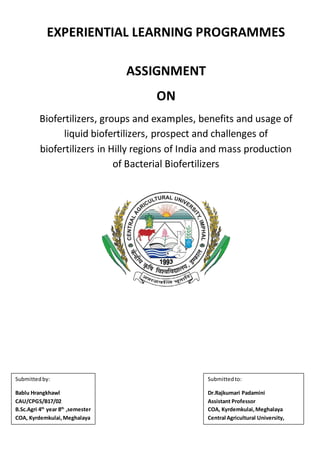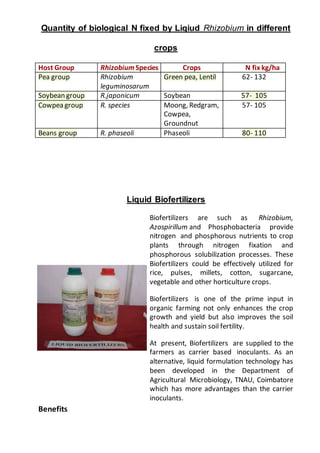This document provides information on biofertilizers including:
- Groups and examples of different types of biofertilizers such as nitrogen fixing, phosphorus solubilizing, and micro-nutrient biofertilizers.
- Benefits of liquid biofertilizers over carrier-based biofertilizers such as longer shelf life and easier application.
- Prospects and challenges of using biofertilizers in the hilly regions of India, which have difficult terrain and fragile ecosystems. The document also discusses mass production methods for bacterial biofertilizers.










